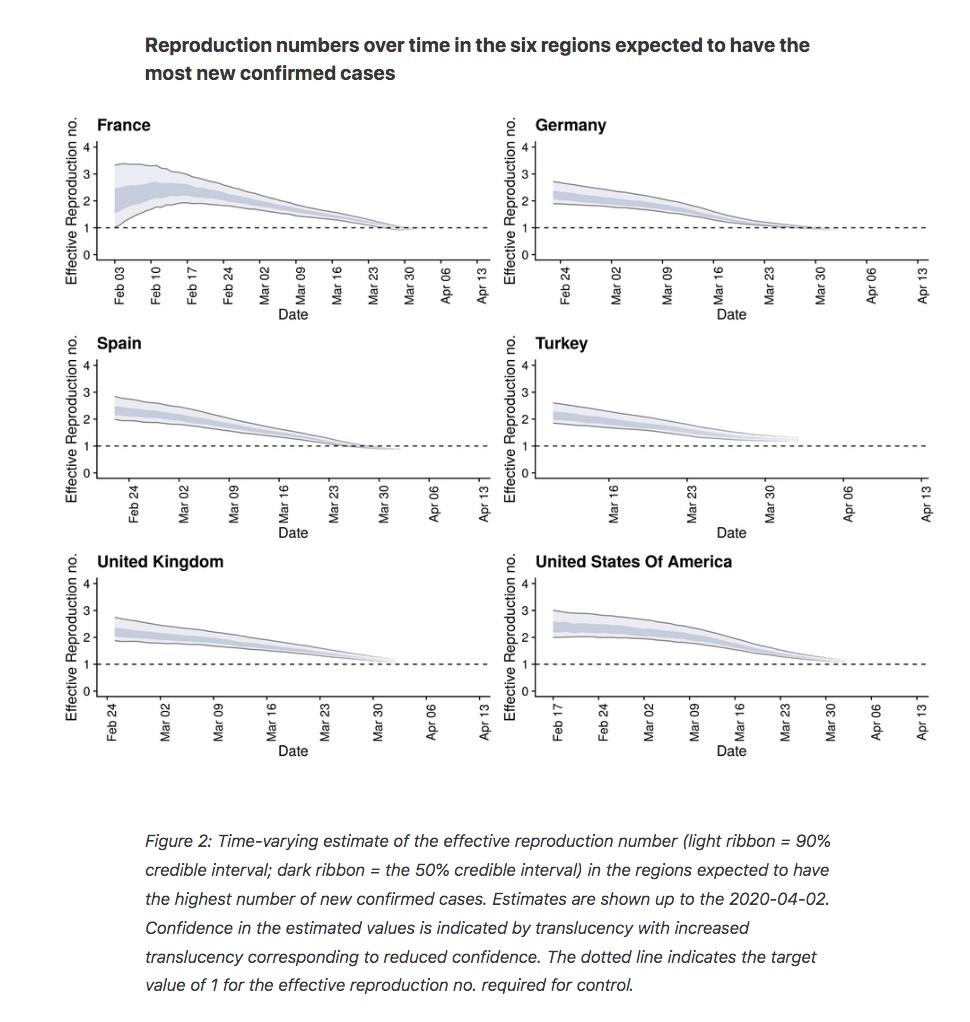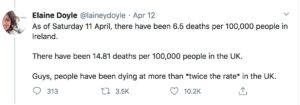Suppression may be working
At least estimates from the London School of Hygiene and Tropical Medicine suggest that various countries pursuing lockdown strategies may be approaching the point where R(0), the reproduction rate, gets to lower than 1.
RIP John Horton Conway
The great mathematician has been taken by Covid-19. He was, said his biographer, Siobhan Roberts, “Archimedes, Mick Jagger, Salvador Dalí, and Richard Feynman, all rolled into one”. He was one of the greatest mathematicians of his time, with “a sly sense of humour, a polymath’s promiscuous curiosity, and a compulsion to explain everything about the world to everyone in it.”
Most lay people will probably know of him through his Game of Life which, among other things, provides a fascinating demonstration of how simple rules can produce very complex outcomes. There will be many obituaries, and in due course a Royal Society memoir of him. But for now Siobhan Roberts’s 2015 Guardian profile conveys a vivid impression of what a remarkable person he was.
Thanks to Guy Haworth for alerting me to the sad news.
Covid-19 and contact-tracing smartphones
Now that it’s been confirmed that the UK government is considering using the technology to address the next phases of the pandemic, it needs to be subjected to some really searching scrutiny. Ross Anderson, who is Professor of Security Engineering at Cambridge, has just published a masterful survey of the various issues raised by the technology. Its title, “Contact Tracing in the Real World” captures the fact that no technology — including this one — is a magic bullet. It may be that smartphones are good at detecting other nearby smartphones, for example, but they know nothing about context, or for that matter about human beings. “On Friday, when I was coming back from walking the dogs”, Ross writes,
“I stopped to chat for ten minutes to a neighbour. She stood halfway between her gate and her front door, so we were about 3 metres apart, and the wind was blowing from the side. The risk that either of us would infect the other was negligible. If we’d been carrying bluetooth apps, we’d have been flagged as mutual contacts. It would be quite intolerable for the government to prohibit such social interactions, or to deploy technology that would punish them via false alarms. And how will things work with an orderly supermarket queue, where law-abiding people stand patiently six feet apart?”
It’s a great blog post — worth reading in full.
I was reminded of a story I heard from the early days of the Wuhan outbreak. A journalist (I forget who) was travelling by train through part of China and was astonished to find that his phone recorded him having visited areas suspected of being hotspots of Covid 19 — even though he hadn’t left the train at any stage. It turned out that his phone was just logging mobile masts located in the cities he was passing at high speed.
As Lisa Geilelman and her fellow-authors point out in their new book, Raw Data is an Oxymoron.
The UK death rate from Covid-19 is twice that of Ireland, even though — proportionately — both countries started out with the same level of ICU provision. Why?
Answer (from a striking Twitter thread by Elaine Doyle, a medical historian) is that the Irish government started earlier and took the threat more seriously than Johnson & Co. For example, the UK allowed 250,000 people to go to the Cheltenham racing festival. The Irish cancelled the country’s National day (St Patrick’s Day, March 17).
A really depressing but salutary read.
Quarantine diary — Day 23
This blog is now also available as a once-a-day email. If you think this might work better for you why not subscribe here? (It’s free and there’s a 1-click unsubscribe if you subsequently decide you need to prune your inbox!) One email a day, in your inbox at 07:00 every morning.


